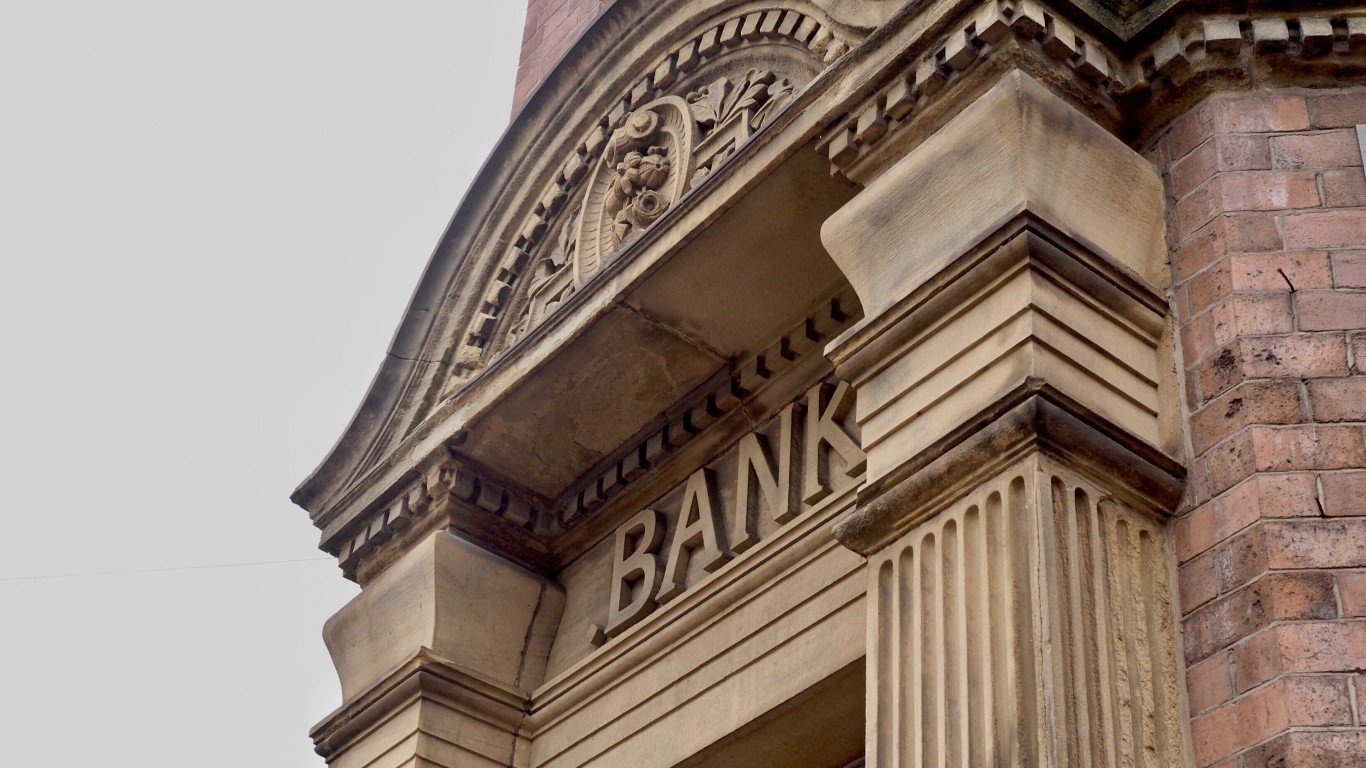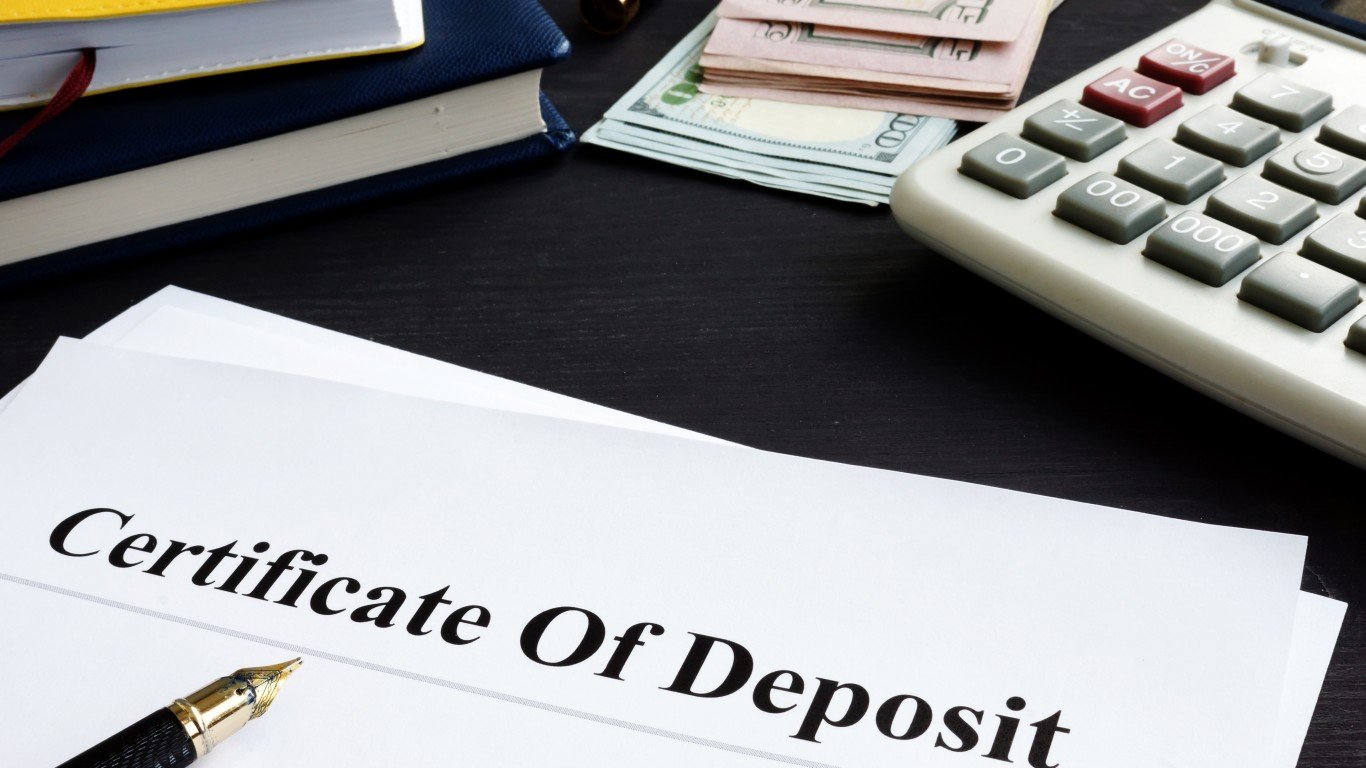

If you got $100,000 burning a hole in your pocket, you can spend lavishly on material goods or a trip, try your luck at a casino, or do online sports betting. Or you can invest the cash.
24/7 Wall St. created a list of 20 of the most common investment types as well as explanations of common successful investment strategies based on the report How to Invest $100,000, produced by financial technology company SmartAsset.
Before you do any investing, take some time to figure out what kind of investor you are and the level of your risk tolerance. This will help determine the kinds of investments you make and which services or companies you utilize. It also might be a good idea to retain the services of a financial advisor before you take the plunge to investing.
There are many options available to you if you are looking to invest $100,000 – mutual funds, exchange traded funds, index funds, to name a few. Investing in real estate and its related funds has been part of many investors’ strategies as well. To help minimize risk, investors should consider strategies such as dollar-cost averaging, in which you invest a fixed amount of money at regular intervals, or other strategies. (These are cities where investors are buying up the most real estate.)
Investors also should look into employer-affiliated investment options such as 401(k) plans as well as individual retirement accounts. (Here is what it costs to retire comfortably in every state.)
Those looking for more safe havens for their money should keep in mind certificates of deposit, money market savings accounts, and high-interest savings accounts.
Click here to see the 20 best ways to invest $100K.

1. Find a financial advisor
Managing your finances can be a complex job. That is where wealth management firms or financial advisors come in. They work with clients to identify their financial objectives, craft a strategy to achieve those goals over time, and manage their wealth. Since financial goals differ by individual, these firms offer a variety of specialties and services.
[in-text-ad]

2. Pay down high-interest debt
Among the best things you can do before investing $100,000 is reducing debt that carries a high interest rate, such as credit card debt and debt from other loans, like payday loans. The average credit card interest rate is 16% or more, well above the average annual returns from the stock markets.

3. Consider a balance transfer credit card
If you have debt on multiple credit cards, look into getting a balance transfer credit card. Some cards will allow you to consolidate all of your debt and may offer an introductory 0% rate that can help you accelerate paying down your debt.

4. Create an emergency fund
An emergency, or rainy day, fund is cash set aside for emergencies, such as losing your job, having a major car or house repair expense, or any other emergency. Many Americans are not prepared for emergencies. A 2018 report by the Federal Reserve found that almost 40% of American adults would not be able to cover a $400 emergency with cash, savings, or a credit card charge that they could quickly pay off.
[in-text-ad-2]

5. Decide what kind of investor you want to be
Whether you are a do-it-yourself investor or lean on the advice of a financial professional, before you invest, decide what kind of investor you are, including how much risk you are willing to handle. If you have a high tolerance for risk, more of your portfolio can be invested in stocks. You may be more inclined to take a flier on smaller companies. The motto of investing is high risk, high reward, but this may leave your portfolio more vulnerable.

6. Open a brokerage account
When opening a brokerage account, whether online or brick and mortar, check the minimum deposit requirement, the cost, and customer service.
Brokages can be full service or discount. With a full-service brokerage, you do not just buy and sell stocks, you can also use other services, like advice on saving for retirement, investing, and minimizing capital gains taxes. These services come with charges.
Discount brokerages generally charge lower commission fees for trades. Some pay their brokers a salary rather than a commission on trades. Discount brokerages do not provide stock market advice.
[in-text-ad]

7. Consider a “robo-advisor”
A robo-advisor might be the right option if you do not have a lot of investing experience. But if you do, this service builds and manages an investment plan that is based on your situation and objectives. Robo-advisor services usually charge lower fees than human financial advisor services. They offer services such as automatic rebalancing and tax-loss harvesting, a method to lower your taxes because of investment losses.

8. Or hire a (human) financial advisor
There is no substitute for the interaction with a human financial advisor when it comes to properly assessing your goals and risk tolerance in investing.

9. Use an asset allocation calculator
An asset allocation calculator is an online tool that can help you determine your risk tolerance and help you allocate your investments if you are going at it alone. If not, it can help match you with a qualified, vetted advisor who can help you achieve your financial goals.
[in-text-ad-2]

10. Invest in a 401(k)
A 401(k) plan is an employer-sponsored retirement savings account that allows you to defer paying taxes on some portion of your income by contributing it to the account. Employee contributions on a periodical basis come directly out of their paychecks and may be matched by the employer.
The personal contribution limit, or employee deferrals, for traditional plans is $20,500 in 2022, subject to cost-of-living adjustments. Some plans allow for participants age 50 or over to make catch-up contributions at the end of the calendar year. The IRS allows additional elective salary deferrals of $6,500 in 2022 for traditional 401(k) plans.
Participants in a traditional 401(k) plan are not allowed to withdraw their funds until they reach age 59½, with the exception of withdrawing funds to cover some hardships or life events. The penalty for early withdrawals from a 401(k) retirement plan is a 10% additional tax levied by the IRS. You only pay income tax when you withdraw the money after you retire.

11. Invest in an individual retirement account (IRA)
IRA stands for individual retirement account and is a defined contribution plan that has in effect replaced pension plans offered by companies. They were begun in the mid-1970s. IRAs are available at financial institutions, and unlike a 401(k) plan, they are not affiliated with your employer. With a traditional IRA, you can contribute money from pre-tax earnings to an account that grows over time. Each year, you can deduct some or all of the amount you contributed from your income at tax time, which will ease your tax burden.
When you start taking distributions from your IRA in retirement, they will be taxed as income. With a Roth IRA, you fund this IRA with after-tax dollars, so you will not pay income taxes in retirement. An IRA distribution is money you withdraw after you have reached 59 1/2. Like a 401(k), any distribution taken before that age will incur a penalty.
Before 2020, the IRS barred those over 70 1/2 from making contributions to a traditional IRA, but that restriction has been lifted.
[in-text-ad]

12. Invest in an index funds
An index fund is a kind of mutual fund or exchange-traded fund with a portfolio assembled to match market indexes like the Standard & Poor’s 500 Index. An index mutual fund is considered to provide broad market exposure, low operating expenses, and low portfolio turnover. Index funds are viewed as essential core portfolio holdings for individual retirement accounts and 401(k) accounts.

13. Invest in mutual funds
A mutual fund is a financial instrument that pools assets from shareholders to invest in securities such as stocks, bonds, money market vehicles, and other assets. Mutual funds are overseen by money managers, who allocate the fund’s assets and attempt to produce capital gains or income for investors.
Mutual funds give small investors access to portfolios of equities, bonds, and other securities. Mutual funds charge annual fees, expense ratios, or commissions.
These funds invest in many securities, and their performance is tracked as the change in the total market capitalization of the fund. Employer-sponsored retirement plans usually invest in mutual funds.

14. Invest in an exchange-traded funds (ETF)
Exchange-traded funds track market indexes, but unlike a mutual fund, they can be traded like stocks. Exchange-traded funds track indices like the Standard & Poor’s 500 or the Dow Jones Industrial Average. They also can follow smaller indices associated with a particular market segment.
ETFs often have lower costs than mutual funds. Another attractive feature is you can invest in certain types of companies, specific sectors like technology or health care, or bonds and real estate.
[in-text-ad-2]

15. Invest in Individual stocks
We’d all like to be the next Warren Buffett and invest our way into unimaginable riches. The reality is that picking the next Microsoft at a bargain price requires luck and spending lots of time researching companies as well as understanding financial and technical analysis. Individual stock investors also need to understand that there is risk in going at it alone.

16. Invest in real estate
You can invest in real estate by buying property directly or through real estate investment trusts that allow you to invest in the sector without purchasing property. A REIT is a company that either owns income-generating properties or owns the mortgage on them. When the properties appreciate, the REIT pays out the profits to shareholders as dividends, which makes this investment very attractive.
REITs specialize in a certain type of property. There are various kinds of REITs – health care, mortgage, residential, office, and retail.
[in-text-ad]

17. Invest in money market accounts (MMA)
Money market accounts, introduced in the 1970s, are available at banks and credit unions and feature both savings and checking accounts. Banks often require a minimum deposit to open a money market account. These accounts generally pay higher interest rates than regular savings accounts and may come with debit cards and some check-writing privileges. Money market accounts are used by those with short-term financial goals, such as saving to buy a car or take a trip.

18. Invest in certificates of deposit (CD)
Certificates of deposits are safe banking instruments that offer higher interest rates than regular savings accounts in exchange for locking up your money for a specific period. CDs are offered at financial institutions such as banks and credit unions. A CD has a set term, ranging from a month up to 10 years. You can withdraw your money but you will forfeit part of the interest earned.

19. Get a high-interest savings account
While big banks are offering very low interest rates for savings accounts, take the time to find institutions that offer higher interest on savings accounts. Savings accounts are the safest place to store your money. The Federal Deposit Insurance Corporation safeguards your money at any FDIC-insured bank in case that bank fails. The insurance covers up to $250,000 per depositor, per FDIC-insured bank, per ownership category.
[in-text-ad-2]

20. Decide whether to invest all your money at once
You can jump into investing with booth feet and invest all of your money in one shot. A sound alternative strategy, however, is dollar-cost averaging.
With dollar-cost averaging, you invest a fixed amount of money at regular intervals. Instead of investing $5,000 in an ETF at once, you invest in $1,000 intervals over five months. By doing this, you face less risk of spending all your money on an asset while it has a high price, since the price of equities fluctuates.
Sponsored: Attention Savvy Investors: Speak to 3 Financial Experts – FREE
Ever wanted an extra set of eyes on an investment you’re considering? Now you can speak with up to 3 financial experts in your area for FREE. By simply
clicking here you can begin to match with financial professionals who can help guide you through the financial decisions you’re making. And the best part? The first conversation with them is free.
Click here to match with up to 3 financial pros who would be excited to help you make financial decisions.
Thank you for reading! Have some feedback for us?
Contact the 24/7 Wall St. editorial team.
 24/7 Wall St.
24/7 Wall St. 24/7 Wall St.
24/7 Wall St.


